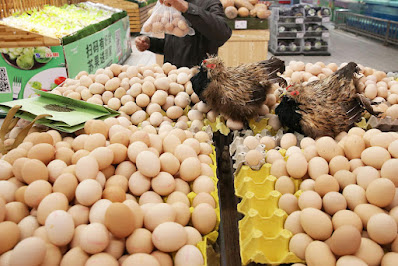Guidelines for chicken marketing
The digital revolution is changing business and society, including the way people shop for and buy their food. Understanding and utilizing digital marketing tools will help savvy companies stay relevant in the changing world.
Bill Bishop, chief architect of Brick Meets Click, shared his digital marketing tips with an audience of chicken industry professionals as part of WATT Global Media's 2018 Chicken Marketing Summit. Bishop, who’s focused his career on consulting with food retail and food marketing clients, gave his insights on how digital tools – and the ability to collect data and target the best potential customers – will shape the future of the business.
 |
| 4 Guidelines for chicken marketing |
“These are fantastic times,” Bishop said. “These are times when the marketing of chicken could be, and probably will be, taken by some of you to a whole new level.”
1. Focus on your core customers
Bishop said marketers should focus on the 80/20 principal, or that 20 percent of customers provide 80 percent of sales. The digital marketing environment, which allows targeting of key customers through the use of data and analytics, gives the marketer the opportunity to identify their most important potential customers and focus their marketing efforts on them.
The best way to leverage the available marketing resources is to focus efforts on that most desirable 20 percent of customers. Bishop said to dial in on finding out who they are and how best to connect with them.
2. Know the complimentary products
Complimentary products go along with the main product and can potentially be sold together to enhance each other. Bishop said the food industry is ripe with these products because of the complimentary nature of crafting recipes and meals and increasingly popular diet programs.
Bishop said bundling of complimentary products is important in food selling. Finding out how to create a bundle or complimentary set with the most appeal and the highest potential profitability, which attracts the right set of customers, is important. He advised identifying the complimentary products and figuring out how they appeal to the most important customers.
3. Track what’s on social media
Social media is a tremendous tool for marketers because of its ability to provide instant feedback about brands and marketing campaigns as well as reveal information about how consumers see the world.
Bishop said these tools can be used to gather information and respond more quickly to trends and commentary both on a local and national level. This information was not previously available in this form, or at this magnitude, and should be used to the advantage of marketers.
4. Partner with the retailer to get your spot at the table
The future of marketing food, Bishop said, may well be working with retailers – in the broadest use of the term – in order to sell a product to consumers. He referenced the changing privacy standards coming out of the European Union’s General Data Protection Regulation (GDPR) and how it could create a system of first-party communication.
First-party communication means potential customers must grant the right to communicate, and if they don’t, there will be no marketing communication allowed. In that system, retailers in food service or general grocery are in a tremendously strong position to serve as a conduit for first-party data. In the near future, the power of digital marketing may open up through partnering with retailers who could one day be the primary source or first-party data.
With this in mind, chicken marketers should look for retailers to partner with in order to win a spot at the table. While doing this, think about the supply chain going all the way from farm to fork through a retail partner. That, Bishop said, will grant the power to use digital, the power to get first-party data and allow for extremely efficient communication effort in terms of cost of broadcasting a message to drive the behavior of an intended customer.
